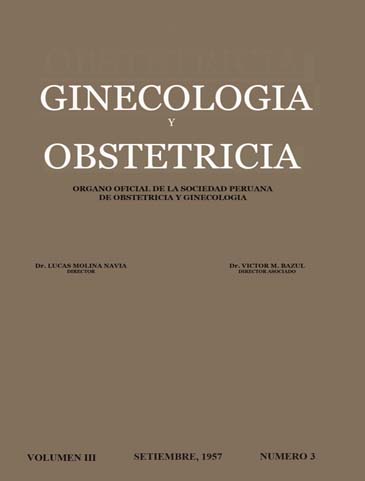Radiographic size of the Peruvian pelvis
DOI:
https://doi.org/10.31403/rpgo.v3i1158Abstract
It is considered the mother's pelvis, as the most important factor of three (mother's pelvis, fetal presentation, uterine contractions), which govern the evolution of the phenomena of birth; hence the radiographic Pelvimetry constitute a clinical assistant value, but is not able to clarify all clinical questions, or tell us exactly the evolution of labor. The major pelvic diameters are studied: conjugated vera, transverse at the superior strait; bi-sciatic and posterior sagittal excavation and bi-sciatic on the lower narrow, being secondly other top narrow diameters used to determine the shape and position of the pelvis in the Caldwell-Moloy classification. In hundred pelvis studied, it has been found that the most frequent vera conjugate (34.5%) is between 11 and 11.5 cm. and bi-sciatic 10 to 10.5 cm. in 41.5%. In the superior strait, 13.5% of the pelvis had vera conjugate between 8.5 to 10 cm., Ie were narrow pelvis. 35% in the excavation were narrow pelvis with bi-sciatic between 8.0 to 9.5 cm.Downloads
Download data is not yet available.
Downloads
Published
2015-07-02
How to Cite
García Mayor, F. (2015). Radiographic size of the Peruvian pelvis. The Peruvian Journal of Gynecology and Obstetrics, 3(3), 183–190. https://doi.org/10.31403/rpgo.v3i1158
Issue
Section
Artículos Originales
















